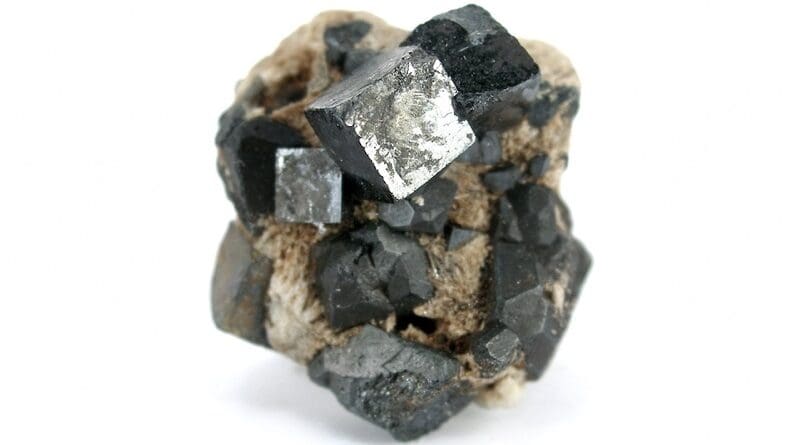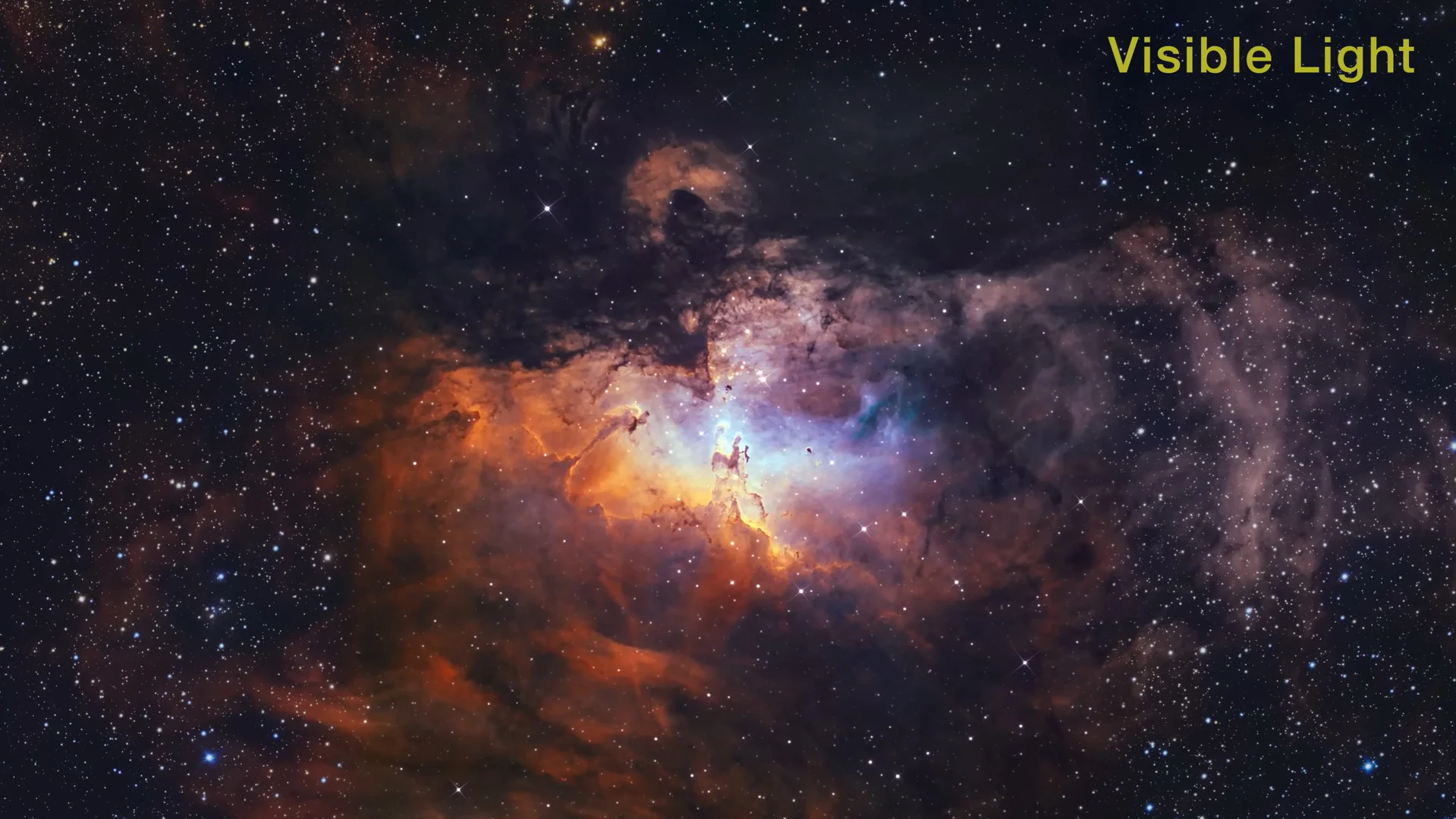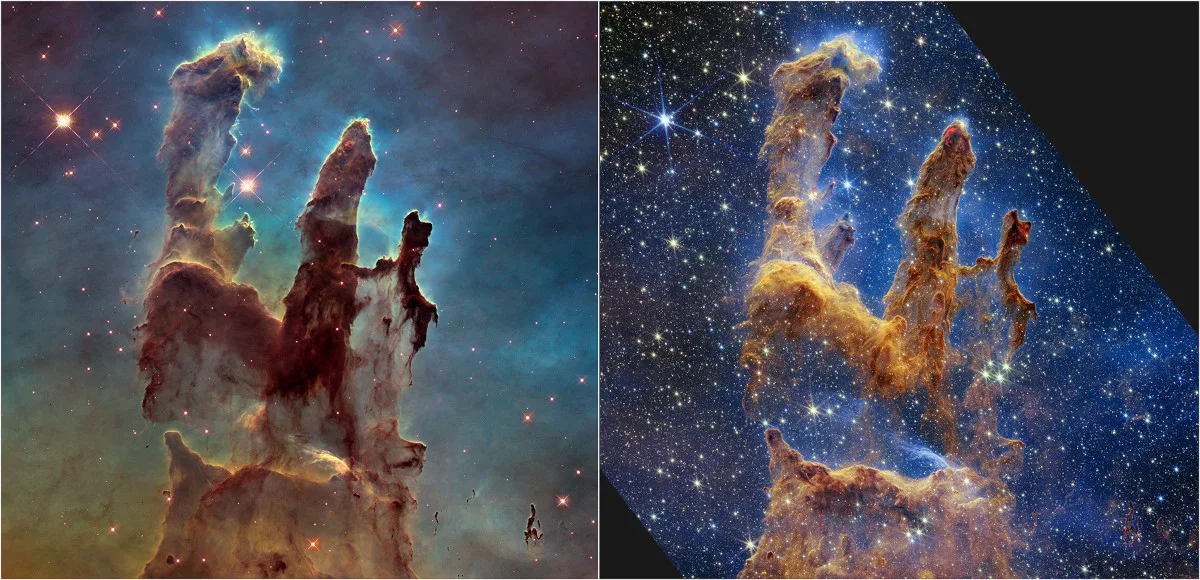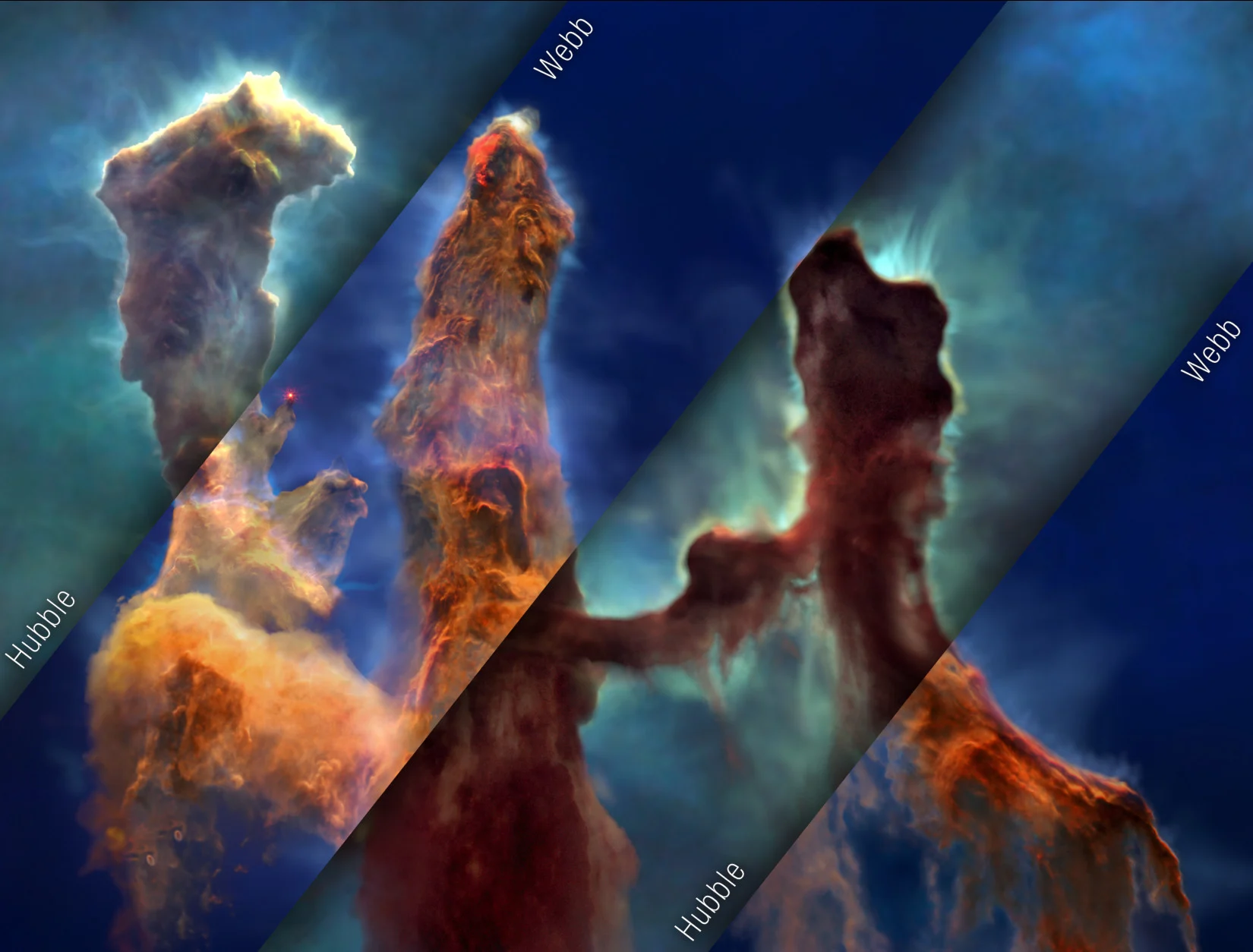
Dawn Of Self-Repairing Spacecraft: Perovskite’s Potential To Transform Orbital Infra – Analysis
Space is a tough place filled with strong radiation. Spacecraft and satellite manufacturers need to use materials that can overcome harsh conditions.
In a paper published in January 2024, Ahmad Kirmani from the Rochester Institute of Technology shared with astronomy.com that his team of materials researchers had found that a new semiconductor material, called ‘metal-halide perovskite’—a material discovered back in 1839 and commonly found in Earth’s crust—can actually repair itself after being damaged by radiation.
From the surface, Earth’s crust extends about 5-70 kilometres into the interiors. It covers the entire planet’s surface. The crust is rich in such minerals as silicon, aluminium and oxygen. Temperatures range from cool at the surface to about 500°C-1,000°C in the deepest parts.
Metal-halide perovskites are effective in absorbing sunlight and converting it into electricity. This makes them a promising option for solar panels in space, which could power satellites or future space habitats. Scientists produce perovskites as inks, which they then apply to glass or plastic surfaces. This process creates thin, film-like devices that are both lightweight and flexible.
Amazingly, these thin-film solar cells work just as well as regular silicon solar cells in lab tests, despite being nearly 100 times thinner than traditional ones. However, these thin films can break down when they come into contact with moisture or oxygen. Scientists and companies are now trying to solve these stability problems to make them suitable for use on Earth.
To see how they would perform in space, a technical team created a radiation test. Perovskite solar cells were exposed to both low- and high-energy protons and a unique property was discovered. The high-energy protons repaired the damage caused by the low-energy protons, enabling the device to recover and keep working. Traditional and conventional semiconductors used in space electronics do not have this self-healing ability.
The technical team was astonished by the discovery. How is it possible for a material that breaks down on exposure to moisture and oxygen not only withstand the powerful radiation of space, but also self-repair under conditions that typically damage conventional silicon semiconductors?
Resilient Perovskite Crystals
The team’s research highlights an interesting property of perovskites—their ability to withstand damage and defects. These crystals belong to a category of soft materials, allowing their atoms to shift into various vibrational states, which scientists refer to as ‘vibrational modes’.
Perovskite’s atoms are normally formed into a lattice structure. However, radiation can displace these atoms, causing damage to the material. The vibrations within the material might help realign the atoms, although the technical team is still uncertain about the exact mechanism behind this process.
Soft Materials for Use in Space
The research suggests that soft materials could be particularly useful in harsh environments, such as those found in space. Radiation is just one of the many challenges that materials face in space. Scientists are still unsure how perovskites will perform when subjected to vacuum conditions, extreme temperature changes and radiation—all at the same time. Temperature might influence the healing behaviour observed by researchers, but more studies are necessary to understand its exact role.
These findings indicate that soft materials could help scientists create technology that functions well in extreme conditions. Scientists now want to research what role vibrations play in enhancing the self-healing abilities of these materials.
The Future of Space Materials
Scientists believe that, in the next 10 years, the number of satellites launched into near-Earth orbit will grow rapidly. Additionally, such space agencies as NASA plan to set up bases on the Moon. Materials that can withstand extreme radiation and repair themselves would be a game-changer.
Researchers estimate that sending just a few pounds of perovskite materials into space could produce up to 10 million watts of power. Currently, it costs about $4,000 (INR 3.3 lakh) per kilogram to launch materials into space, so using efficient materials is crucial.
ScreenshotCrystals of perovskite on matrix. Photo Credit: Rob Lavinsky, iRocks.com, Wikipedia Commons

Girish Linganna is a Defence, Aerospace & Political Analyst based in Bengaluru. He is also Director of ADD Engineering Components, India, Pvt. Ltd, a subsidiary of ADD Engineering GmbH, Germany. You can reach him at: girishlinganna@gmail.com
Scott Sutherland
Published on Jun. 28, 2024
"When we combine observations from NASA's space telescopes across different wavelengths of light, we broaden our understanding of the universe."
One of the most famous objects in space has been imaged by our most powerful telescopes, and now scientists have produced an amazing 3D visualization of The Pillars of Creation, revealing it in greater detail than ever before.
Roughly 7,000 light years away from Earth is an immense cloud of dust and gas known as the Eagle Nebula. At the heart of this cloud is one of the most well-imaged objects in space — The Pillars of Creation

The Eagle Nebula, a cluster of stars, dust and gas, located in the Serpens constellation. Standing out against the bright core of the nebula are the famous Pillars of Creation. (NASA/STSci)
First revealed to us nearly 30 years ago by the Hubble Space Telescope, our view of the Pillars of Creation has been updated again and again. First, Hubble returned to observe it nearly a decade ago, returning even higher resolution images of this star-forming region.
Then, in 2022, astronomers aimed the new James Webb Space Telescope at this same region of space.

A comparison of Hubble's visible light image (left) with Webb's infrared view (right) of the Pillars of Creation. (Hubble image: NASA, ESA, and the Hubble Heritage Team (STScI/AURA). Webb image: NASA, ESA, CSA, STScI; Joseph DePasquale (STScI), Anton M. Koekemoer (STScI), Alyssa Pagan (STScI))
With Webb's more advanced cameras and deeper view into the infrared spectrum, it treated us to the best, and highest resolution view of the Pillars that we had ever seen.
Now, though, a team of scientists has combined the Hubble and Webb observations, producing a three-dimensional model of the Pillars of Creation.
Watch below: The Pillars of Creation and the Interplay of Stars and Dust
According to NASA, the narrated video above "combines a direct connection to the science and scientists of NASA's Astrophysics missions with attention to the needs of an audience of youth, families, and lifelong learners. It enables viewers to explore fundamental questions in science, experience how science is done, and discover the universe for themselves."
"Several stages of star formation are highlighted in the visualization. As viewers approach the central pillar, they see at its top an embedded, infant protostar glimmering bright red in infrared light," NASA explained. "Near the top of the left pillar is a diagonal jet of material ejected from a newborn star. Though the jet is evidence of star birth, viewers can't see the star itself. Finally, at the end of one of the left pillar's protruding 'fingers' is a blazing, brand-new star."

A mosaic of Hubble and Webb images of the Pillars of creation reveal the different formations in the gas clouds that are highlighted by each individual telescope — wispy gas streamers by Hubble and the stunning details of the pillars themselves by Webb. (Greg Bacon, Ralf Crawford, Joseph DePasquale, Leah Hustak, Christian Nieves, Joseph Olmsted, Alyssa Pagan, and Frank Summers (STScI), NASA's Universe of Learning)
"By flying past and amongst the pillars, viewers experience their three-dimensional structure and see how they look different in the Hubble visible-light view versus the Webb infrared-light view," Frank Summers of the Space Telescope Science Institute (STScI) explained in a NASA press release. "The contrast helps them understand why we have more than one space telescope to observe different aspects of the same object."
"When we combine observations from NASA’s space telescopes across different wavelengths of light, we broaden our understanding of the universe," added Mark Clampin, the Astrophysics Division director at NASA Headquarters. "The Pillars of Creation region continues to offer us new insights that hone our understanding of how stars form. Now, with this new visualization, everyone can experience this rich, captivating landscape in a new way."
Thumbnail image combines Hubble visible light images with Webb infrared data, resulting in a highly detailed view of the Pillars of Creation. Courtesy NASA and the Space Telescope Science Institute (STScI)
Starliner to remain on ISS for more thruster tests
Jeff FoustJune 28, 2024

WASHINGTON — NASA and Boeing plan to keep the CST-100 Starliner spacecraft at the International Space Station well into July to conduct additional tests, while emphasizing its two-person crew is not “stranded” in space.
At a June 28 briefing, about the Crew Flight Test (CFT) mission, the first in 10 days, agency and company officials said they would not set a return date for Starliner, bringing back NASA astronauts Butch Wilmore and Suni Williams, until after completing additional tests to better understand thruster malfunctions and helium leaks the spacecraft has experienced.
“Butch and Suni are not stranded in space,” said Steve Stich, NASA commercial crew program manager. “Our plan is to continue to return them on Starliner and return them home at the right time. We have a little bit more work to do to get there for the final return.”
That additional work now includes thruster tests that NASA plans to perform at its White Sands Test Facility. Stich said NASA will take a reaction control system thruster like those on Starliner and put it through the same profile of burns used on Starliner during its approach to the ISS. The goal is to see if they can replicate the issues that caused the spacecraft to “de-select” those thrusters and perform inspections of them not possible while in orbit.
Those tests are scheduled to begin no earlier than July 2 and last a couple weeks, he said. “This will be the real opportunity to examine the thruster just like we had in space on the ground, with detailed inspections.”
Only after completing those tests and reviewing their results would NASA set a landing date for Starliner, which would push it out to no earlier than the latter half of July. That process will also include an agency-level review of the spacecraft to confirm that they have all the data they need to understand the cause of the problems and that the spacecraft is safe to return home.
While original plans called for Starliner to remain docked to the ISS for only eight days, officials said there was no rush to return home while they can still gather data, particularly from the service module section that is jettisoned and not recovered at the end of the mission. “We have the luxury of time,” said Ken Bowersox, NASA associate administrator for space operations.
“We understand these issues for a safe return,” Mark Nappi, Boeing vice president and commercial crew program manager, of the thruster and helium leak problems. “But we don’t understand these issues enough yet for us to fix them permanently.”
He said the results of the thruster tests on the ground could lead controllers to perform additional tests with Starliner’s thrusters while docked to the station, which is why the ground tests will be performed before Starliner returns, not after.
NASA has originally set a 45-day limit on the length of the CFT mission based on the batteries in the crew module. However, Stich said that can be extended because of the performance of the batteries so far in the mission, with no change in risk to the mission.
The extended duration of the mission, along with the problems with the thrusters and helium leaks, will pose challenges to certify the vehicle for crew rotation missions. NASA had hoped to have Starliner certified by November, in time for a February crew rotation mission called Starliner-1.
“We understand it’s going to take a little bit longer,” Stich said of certification. He said that NASA is working on preparations for both Starliner-1 and Crew-10, a Crew Dragon mission planned for launch in late summer of next year, in parallel, allowing NASA to push off a decision on whether to move up Crew-10 to February.
“We can take our time and get through the Crew Flight Test and have the vehicle return with Butch and Suni, and then we can make decisions afterwards,” he said. “We still have time.”
During the briefing, Nappi expressed frustration with what he considered negative media coverage of the CFT mission. “Being a representative of Boeing and a representative of the Starliner program, it’s pretty painful to read the things that are out there,” he said. “We’ve gotten a really good test flight that’s been accomplished so far and it’s being viewed rather negatively.”
However, many reporters on the call complained of a lack of updates about the mission as well as details about why the timeline for Starliner’s return kept being pushed back. “I think we probably need to be doing a little bit more frequent interaction with the media to keep you up to date,” Stich acknowledged.
Spacewalk updates
NASA also used the briefing, lasting a little more than an hour, to discuss both the scrubbed spacewalk at the station June 24 as well as the agency’s award of a contract to SpaceX June 26 for the U.S. Deorbit Vehicle (USDV).
The June 24 spacewalk was postponed when water leaked into the airlock after astronaut Tracy Dyson disconnected a suit umbilical just as the spacewalk was starting. Astronauts have not been able to recreate the leak, said Bill Spetch, operations integration manager for the ISS program at NASA, and the cause remains under study.
Emily Nelson, chief flight director, said leaks from fluid connectors are not uncommon, but they had not seen this specific leak before. “We just need to understand this particular one in more detail before we can get the crew lined up to try again.”
NASA had planned a spacewalk for July 2, but that has been pushed back to the end of July, Spetch said. That spacewalk will have a different set of tasks as the June 24 spacewalk, combining tasks for what had been projected to be a series of three spacewalks. That work will include relocating an antenna, doing preparatory work for future repairs of the Alpha Magnetic Spectrometer, replace a rate gyro assembly and swab parts of the station’s exterior to study any microorganisms that may live there.
When NASA announced the selection of SpaceX as the developer of the USDV, neither the company nor the agency disclosed details about the design of the spacecraft, which will be used to perform the final maneuvers to deorbit the station at the end of its life.
“That’s based off of a Dragon heritage design,” said Spetch, with modifications to the trunk section. He did not go into details about the design and declined to discuss what set it apart from other proposals, noting that NASA had not yet issued a source selection statement for procurement.
Kevin Holden Platt
Contributor
Writing at the intersection of space and defense, focus on SpaceX, Mars' 1st cosmopolis.
Jun 28, 2024

Visitors scan a model of the Soviet-era Tsar Bomb, the most powerful nuclear weapon ever created. ... [+]AFP VIA GETTY IMAGES
As Russia escalates its nuclear brinkmanship - with a top-secret drive to launch the first plutonium warhead into orbit and with simulated explosions of tactical bombs near Ukraine - it is edging closer to sparking a conflict with the 32-nation NATO alliance, say leading defense scholars in the U.S.
The White House has already called out Moscow’s clandestine mission to launch a spacecraft capped with a nuclear warhead, even as space defense experts across the U.S. war-game how to prevent this new space super-bomb from threatening American satellites, and how to respond if the weapon is ever ignited.
President Vladimir V. Putin has been scaling a pyramid of nuclear escalation, but it remains unclear whether this process will end with Russia’s explosion of a powerful warhead in low Earth orbit, says Spenser Warren, a scholar on Russia’s nuclear modernisation drive under Putin’s reign at the University of California Institute on Global Conflict and Cooperation.
“Russian nuclear threats reached peaks at several points,” Warren told me in an interview, including its recent virtual detonations of tactical bombs on a mock Ukrainian battlefield, its suspension of the U.S.-Russian New START arms control treaty, and now its race to perfect an orbital bomb to shake up the heavens.
Hypothetically, the White House could opt to respond to Russia’s lofting a nuclear-tipped spacecraft by shooting it down with an anti-satellite missile as an act of self-defense, says Dr. Laura Grego, a preeminent expert on nuclear weapons, missile defense, and space security at the Union of Concerned Scientists.
“One can use a conventionally armed interceptor of the type the U.S. and others have developed to destroy the nuclear weapon,” she told me.
But that mission would be extremely high risk, she warns.
“Russia could preemptively detonate the nuclear weapon if it saw the interceptor launch and suspected where it was headed,” she says.
As a co-drafter of the Outer Space Treaty, Russia is obligated never to send a nuclear bomb into orbit, she points out. “The best place to verify compliance with the obligation not to station nuclear weapons in space is before launch.”
“It’s very much harder once such a weapon is launched.”
But Russia has suspended nuclear inspections required under the New START Treaty, and is certain to balk at any U.S. or UN request to visit its nuclear weapons centers to find the orbit-bound bomb.
“There may be contextual clues about whether a satellite is actually carrying a nuclear weapon,” Dr. Grego says, “but I expect that there are pretty good techniques for disguising it as something else, at least for a while.”

Russian rockets take center stage in central Moscow.
But Russia might now be abandoning that space détente, he told me in an interview.
During a fascinating CSIS fireside chat that Dr. Hamre hosted, "The Nuclear Option: Deciphering Russia's New Space Threat,” he stated: “This is an implication there’s now a weapon in orbit or could be a weapon in orbit and that's a very profound thing. Nuclear weapons in space are really profoundly different from nuclear weapons here on planet Earth.”
"We're used to thinking about blast effects and there's the shock wave and all that sort of thing. All of that is the product of an Earthly environment,” he added.
In an interview right after that gathering, Dr. Hamre told me: “Much of the destructive quality of nuclear weapons on Earth comes from the heat (the detonation heating air molecules) and blast effects (the air compression that is pushed violently through the atmosphere). Some energy from the blast is consumed by impact on the ground, generating ejecta. You have none of that in space. So almost all the energy is dissipated as x-rays.”
“A nuclear detonation in space,” he says, “would reach out hundreds of miles.”
Even during the ultimate arms contest that marked Cold War I, when Moscow and Washington competed to test thermonuclear bombs that could set entire continents afire, the two sides agreed to a ban on celestial weapons to ensure their race to the Moon would remain peaceful.
Russia’s repudiation of the outer space pact by stationing its doomsday warheads in orbit would end that longstanding truce.
Now just a shadow of the one-time Soviet space superpower, Russia is operating “a structurally failing space program,” says James Clay Moltz, one of the top space defense scholars in the U.S. and a professor at the Naval Postgraduate School in Monterey.
To mask Russia’s decline as a space power, “Putin seems to have decided that his only card is to threaten U.S. satellites and even the space environment itself,” Professor Moltz told me in an interview.
“But the use of a nuclear weapon in orbit would be an act of international terrorism,” he says.
“The electro-magnetic pulse and radiation would indiscriminately kill astronauts on the International Space Station and taikonauts on China’s Tiangong space station.”
The blast could destroy “thousands of satellites that provide information critical to the world economy and human safety on the ground, at sea, and in the air,” adds Professor Moltz, who has written a series of internationally acclaimed books on the expanding dangers of great power conflicts in space, including Crowded Orbits.
“Any country that carries out such an act,” he says, “would be become an instant international pariah.”
If Russia did explode a powerful nuclear warhead in the vicinity of the International Space Station, killing its American and European astronauts, and destroying a swath of U.S. satellites, this act of aggression could swiftly cascade into a superpower confrontation, says Professor Jack Beard, one of the world’s leading experts on the mosaic of UN treaties governing space defense and director of the Space, Cyber & National Security Law Program at the University of Nebraska College of Law.

Russian Soyuz rocket set to launch to the ISS.
Professor Beard, who recently published the globe’s first comprehensive “Manual on the International Law of Military Space Activities and Operations,” says the blast would likely annihilate not only a ring of SpaceX satellites, but also American defense spacecraft circling the Earth along the same orbital plane.
If part of a three-pronged assault on the U.S. - including its astronauts, New Space allies, and military satellites - it would likely be recognised as an “armed attack” under the UN Charter that justifies the use of force in self-defense, Professor Beard told me.
Although this hypothetical warhead was not detonated on American territory, he says, the White House and Defense Department would be highly likely to treat it “as an armed attack against the United States itself.”
The president would likely quickly declare that the U.S. is reserving the right to respond with armed force.
And though the bombing was carried out beyond American borders, Professor Beard says, that does not necessarily preclude a strike against the territory of the responsible state.
Formerly a high-ranking counsel at the Pentagon, Professor Beard recounts that when Libyan state-sponsored terrorists were implicated in the bombing of a Berlin discotheque that killed three Americans back in 1986, President Ronald Reagan responded with a series of airstrikes across Libya.
In addition to the deaths of American astronauts in outer space, the destruction of the US military satellites could also likely justify the use of force in response, Professor Beard says.
If the U.S. did opt to use force in its self-defense, it could also seek to invoke Article 5 of the NATO agreement, which provides for a collective defense following an attack on any single member of the alliance, he says.
The beginnings of the next world war, ignited in space, would be set in motion.
Check out my website.

Kevin Holden Platt
I cover world-leading breakthroughs in science and hyper-technology, with stories reported across three continents, published in National Geographic

An illustration of a Moon base that could be built using 3D printing and ISRU, In-Situ Resource Utilization. Credit: RegoLight, visualisation: Liquifer Systems Group, 2018
POSTED ONJUNE 28, 2024 BY MATT WILLIAMS
In the coming years, NASA and other space agencies plan to extend the reach of human exploration. This will include creating infrastructure on the Moon that will allow for crewed missions on a regular basis. This infrastructure will allow NASA and its international partners to make the next great leap by sending crewed missions to Mars (by 2039 at the earliest). Having missions operate this far from Earth for extended periods means that opportunities for resupply will be few and far between. As a result, crews will need to rely on In-Situ Resource Utilization (ISRU), where local resources are leveraged to provide for basic needs.
In addition to air, water, and building materials, the ability to create propellant from local resources is essential. According to current mission architectures, this would consist of harvesting water ice in the polar regions and breaking it down to create liquid oxygen (LOX) and liquid hydrogen (LH2). However, according to a new study led by engineers from McGill University, rocket propellant could be fashioned from lunar regolith as well. Their findings could present new opportunities for future missions to the Moon, which would no longer be restricted to the polar regions.
The research team was led by Sebastian K. Hampl, a M.Sc. Candidate in Mechanical Engineering at McGill University and part of the Alternative Fuels Laboratory. He was joined by multiple colleagues from McGill’s Department of Mechanical Engineering, as well as researchers from the Department of Aerospace and Mechanical Engineering at the University of Texas at El Paso, the Research Institute of Advanced Materials in Seoul, and the Eindhoven University of Technology in the Netherlands. Their paper, “Conceptual design of rocket engines using regolith-derived propellants,” recently appeared in Acta

Producing propellant from lunar resources is one of several measures designed to reduce the cost of missions to deep space. Whereas resupply missions to the International Space Station (ISS) can be mounted within a few hours, sending one to the Moon would take about three days. Based on current launch costs, sending one to the Moon would cost over $35,000 per kg ($15,909 per lb). When you factor in the time it takes to make a one-way transit to Mars using current propulsion technology – 6 to 9 months – the importance of ISRU becomes all the more apparent.
The need to produce propellant in situ will also reduce the mass and payload requirements of ships. As the Rocket Equation establishes, rockets generate thrust by expelling some of their mass (i.e. propellant). The amount of propellant is directly related to the spacecraft’s full mass and payload, which makes propellant the single greatest source of spacecraft mass. Consider the Block 1 variant of NASA’s Space Launch System (SLS) – the rocket sent the uncrewed Artemis I spacecraft beyond the Moon and farther from Earth than any crew-capable vehicle in history.
While the SLS weighs 1,588 metric tons (3.5 million lbs) when unfueled (aka. dry mass), it weighs up to 2,603 metric tons (5.74 million lbs) fully-fueled. The Starship and Super Heavy, the most powerful launch system in the world, has a total dry mass of 285 metric tons (~630,000 lbs) but weighs a whopping 4,885 metric tons (10.77 million lbs) fully fueled. In short, propellant mass makes up 64% and 94% of these spacecraft launch masses, respectively. As Hampl explained to Universe Today via email:
“We need to produce resources locally as they take up a lot of space in terms of payload on the rocket. That limits the amount of resources we can carry to the lunar surface. Without refueling, the range of the missions is very limited as every drop of propellant needs to be budgeted and if something goes wrong that uses extra propellant, the astronauts might not be able to return back to Earth. The system we currently have could be compared to a car infrastructure where you could only fuel up in one place on the whole globe and any “exploration mission” you want to do would have to be planned meticulously and every mistake could leave you stranded.”

The concept of ISRU is time-honored, though no attempts were made during the Apollo Era when astronauts last stood on the lunar surface. Currently, the main ISRU concept calls for harvested water ice from surface regolith and subjecting it to electrolysis to produce hydrogen and oxygen. But as Hampl indicated, surface water is localized on the Moon, existing in Permanently Shadowed Regions (PSRs) around the poles. In the South Pole-Aitken Basin, craters like Shoemaker, Shackleton, and Faustini all act as “cold traps,” ensuring that water ice does not sublimate from exposure to the Sun.
Furthermore, extraction is a challenge, and hydrogen storage for longer periods of time is very problematic. This imposes many limits, which is why Hampl and his colleagues began investigating an alternative that NASA investigated back in the 80s (but never developed). As Hampl explained:
“We proposed to use lunar regolith to derive propellants that are ubiquitous. From regolith, you can extract metallic components (which will be the fuel) and oxygen (which will be used as the oxidizer). We also investigate how extracting sulfur (which is abundant enough, albeit, not as abundant as the metallic components) to expand our options for rocket engine configurations. As oxygen production from regolith is vital for sustaining the lunar habitat, the reduction technology to extract oxygen from the regolith is being developed. The metallic powder will be a byproduct of the process and we conveniently propose to use it as the rocket fuel.”
A benefit of this process is that it will rely on space mining technologies developed by startups hoping to take advantage of the commercialization of Low Earth Orbit (LEO) and Cis-Lunar space in the coming decades. The process is also “fuel lean,” which refers to having more oxidizer than fuel in a rocket engine. “In our case, a small amount of metallic powder and a large amount of oxygen,” said Hampl. “The ratio of oxidizer and fuel can be adjusted and greatly influences combustion parameters such as temperatures and performance.”

The advantages of their proposed system are numerous. For starters, it would allow future missions to produce propellant anywhere on the lunar surface with electricity. “The only things one would need, obviously, are the production facility and an electrolyte, which probably will have to be brought from Earth (but the quantities are manageable),” said Hampl. “There are reduction methods only requiring electricity but they are less efficient and do not seem to work as well (research ongoing). Additionally, the propellant is easier to store, more dense than hydrogen, and could be transported more easily.”
Moreover, engines that rely on metallic powder propellant are currently being developed, especially with ramjets and applications for air-breathing propulsion. The one trade-off is that the predicted performance of a rocket using this propellant is less than what a rocket relying on LH2/LOX can deliver. However, the “fuel lean” nature of their propellant results in much lower combustion temperatures, causing less material strain and reducing the cost of repair and refurbishment. In addition, the performance decrease compared to LH2/LOX at lower combustion temperatures is not as pronounced.
This proposed method could open new doors for ISRU on the Moon and greater flexibility when it comes to refueling missions. “Our work focused on the thermodynamic calculations and proposing ways how this could be implemented as well as making the case where the advantages of this technology lie,” said Hampl. “We hope that someone will pick up the idea and start developing and testing such an engine since we strongly believe that this would be a better concept than using hydrogen/oxygen and should get more attention.”
It is fitting that in their plans to return to the Moon (this time, to stay), space agencies like NASA are reexamining concepts that were proposed during the Apollo Era but never developed. These concepts, which include everything from metallic propellants, ISRU, closed-loop habitats, and nuclear propulsion, will also be vital in exploring Mars and beyond. They will also be vital in our efforts to extend humanity’s presence beyond Earth and the Earth-Moon system.
Further Reading: Acta Astronautica



